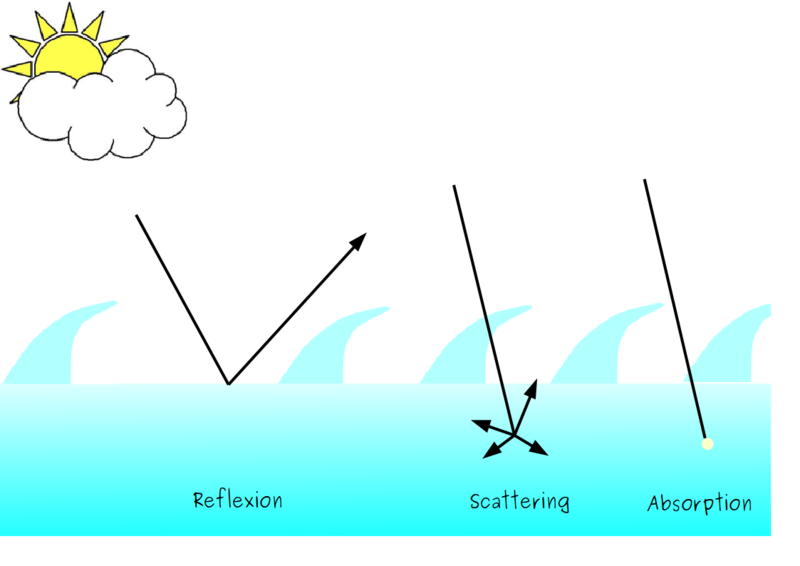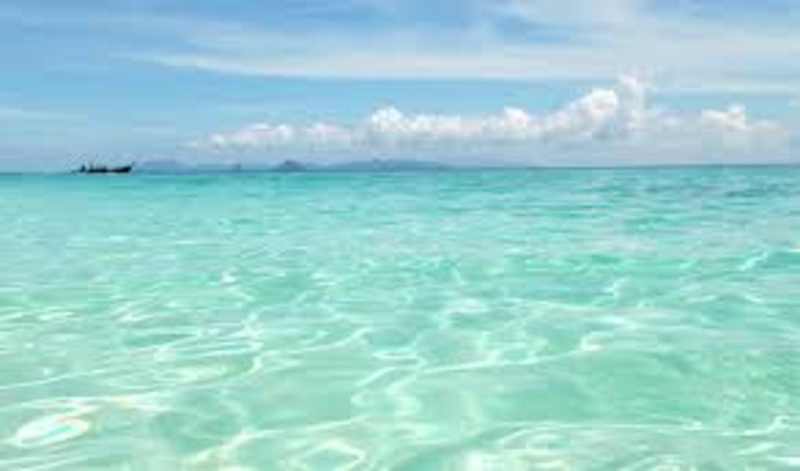What is water transparency?
Corresponding to the intuitive idea of transparency, we can relate it as a measure of the depth of light penetration into the water. Water transparency depends on the amount of particles in the water. Particles can be inorganic (e.g. sediment from erosion) or organic (such as algae, phytoplankton). During the light propagation in the water, the light attenuates due to absorption and dispersion of these particles until completely disappearing. The extinction depth depends on optical phenomena such as absorption or scattering of light caused by the presence of different components in the water, the presence of algae that absorb light for photosynthesis or the presence of dissolved matter and zooplankton that scatter the light.
These different components (phytoplankton, zooplankton, sediment, organic matter...) are what are called optically active components and their distribution can greatly vary over space and time. For example, large accumulations of these components make the light rapidly absorbed and thus unable to reach greater depths.

Figure 1. The different paths of the light in the water
In other words, the less particles, the more water transparency.
It can be intuitively understood that an increase of suspended matter that can be caused by an alga bloom or by an increased sediment discharge from the river in the water implies less light penetration into the water, affecting the lives of many marine communities.
 |
 |
 |
Figure 2. Different type of waters
